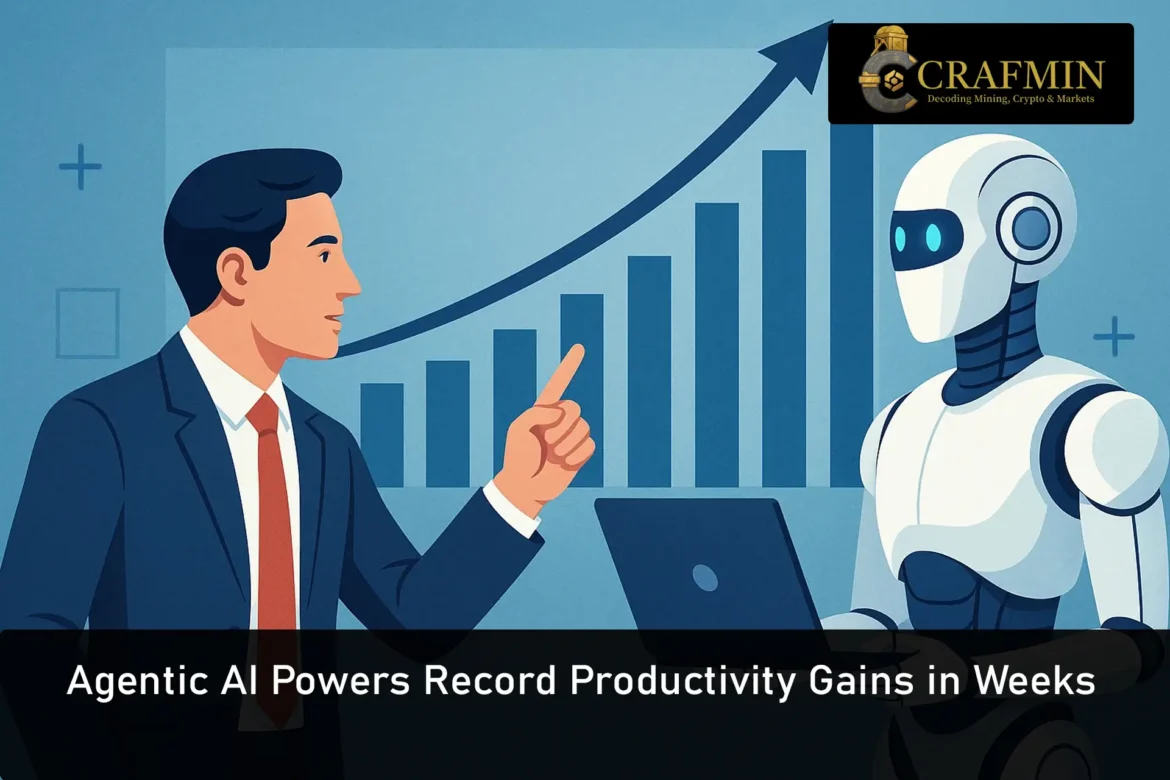Australian companies are reporting remarkable operational improvements within days of deploying agentic AI tools.
Agentic AI is not just a promising concept anymore—it’s delivering tangible results. Businesses across industries are seeing real boosts in efficiency, cost savings, and performance just weeks after implementation.

Agentic AI Drives Unmatched Productivity Growth in Weeks ( Image Source: GSDC )
Unlike earlier AI experiments that focused on narrow tasks or data analysis, agentic AI acts independently, carrying out entire processes and managing tasks with little or no prompting. For decision-makers and operations teams alike, the impact has been both immediate and significant.
Firms are no longer asking whether AI works—they’re now racing to adopt and scale.
What Makes Agentic AI Stand Out?
Unlike traditional automation, agentic AI operates on intent. Provide it with a goal, and it determines the best path to achieve it—whether that’s handling communication, pulling the right data, or interacting with different systems to get the job done.
It doesn’t just wait for input. It initiates action, evaluates progress, and adapts in real time. Imagine an ultra-efficient assistant who doesn’t just follow instructions but actively manages your workload and flags the right decisions at the right time.
This difference—between passive automation and proactive execution—is the core of its productivity power.
Rapid Results Across Business Functions
Several Australian firms report cutting admin-heavy processes nearly in half within the first fortnight of using agentic AI. Others say team efficiency has spiked as staff shift focus from repetitive chores to higher-value work.
These are not isolated cases. Across industries—from finance to logistics to retail—managers are sharing similar feedback:
“It’s like someone turned on a switch. Suddenly, everything moves faster, with less friction.”
With ROI becoming visible in weeks—not months or years—agentic AI is setting a new standard for workplace tech value.
Practical Business Goals Drive Adoption
This is not about replacing people. It’s about enabling them.
Agentic AI excels at handling routine tasks, freeing up teams to focus on more strategic, high-impact work. Whether it’s managing internal workflows, improving supply chains, or handling customer inquiries, the focus is on achieving real business outcomes.
The technology’s success depends on how well it fits into existing operations—quietly removing bottlenecks and accelerating throughput without a complete overhaul.
It’s not futuristic. It’s functional—and increasingly essential.
Our early evaluations of Agentic AI have this technology pegged at a multi-trillion-dollar productivity driver into the economy over the next five years.
While there are Agentic solutions being offered up and down the stack by infrastructure, platform, and SaaS companies, there… https://t.co/Tcj8dUIEvC
— Daniel Newman (@danielnewmanUV) December 18, 2024
Investment and Interest Are Surging
With proven returns, businesses are shifting from pilot programs to full deployment. AI has moved beyond boardroom discussions and is now a core component of technology spending plans.
Organisations are forming AI teams, integrating these tools into daily operations, and tracking the benefits with precision.
The shift in conversation is noticeable:
“We’re not testing AI anymore. We’re using it—and we’re measuring it.”
This focus on measurable impact is propelling corporate Australia into a new age of automation with purpose.
More Than Efficiency—A Cultural Shift
The transformation goes beyond metrics. Employees are noticing the change too.
With repetitive, manual tasks lifted off their shoulders, team members are finding space to innovate, collaborate, and think creatively. Many leaders say morale has improved, not just because of the technology, but because of what it enables people to do.
This renewed sense of purpose is no small side-effect—it’s a powerful cultural boost. Companies are finding that empowering employees through smart automation pays off in engagement as well as output.
Rethinking Organisational Structure
The impact of agentic AI could fundamentally change how companies are built.
Functions that once required entire teams may soon be handled through automated flows. Middle managers may evolve into strategic enablers rather than process overseers. Decision-making could become faster and more data-informed as AI agents pre-process information and offer insights.
This doesn’t spell widespread redundancy—it signals a shift in focus, where human creativity and machine capability align more closely than ever.
Workplaces that adapt quickly may become leaner, more agile, and better equipped to compete in real time.
Final Take: AI Results You Can’t Ignore
The business case for agentic AI is no longer theoretical. The benefits are measurable, the results are quick, and the momentum is only growing.
From automating day-to-day tasks to unlocking human potential, agentic AI tools are reshaping how business gets done—faster, smarter, and more sustainably.
Organisations still on the fence might soon find themselves at a disadvantage. The future is moving fast—and so are the competitors.
This is no longer about exploring AI. It’s about executing with it.

